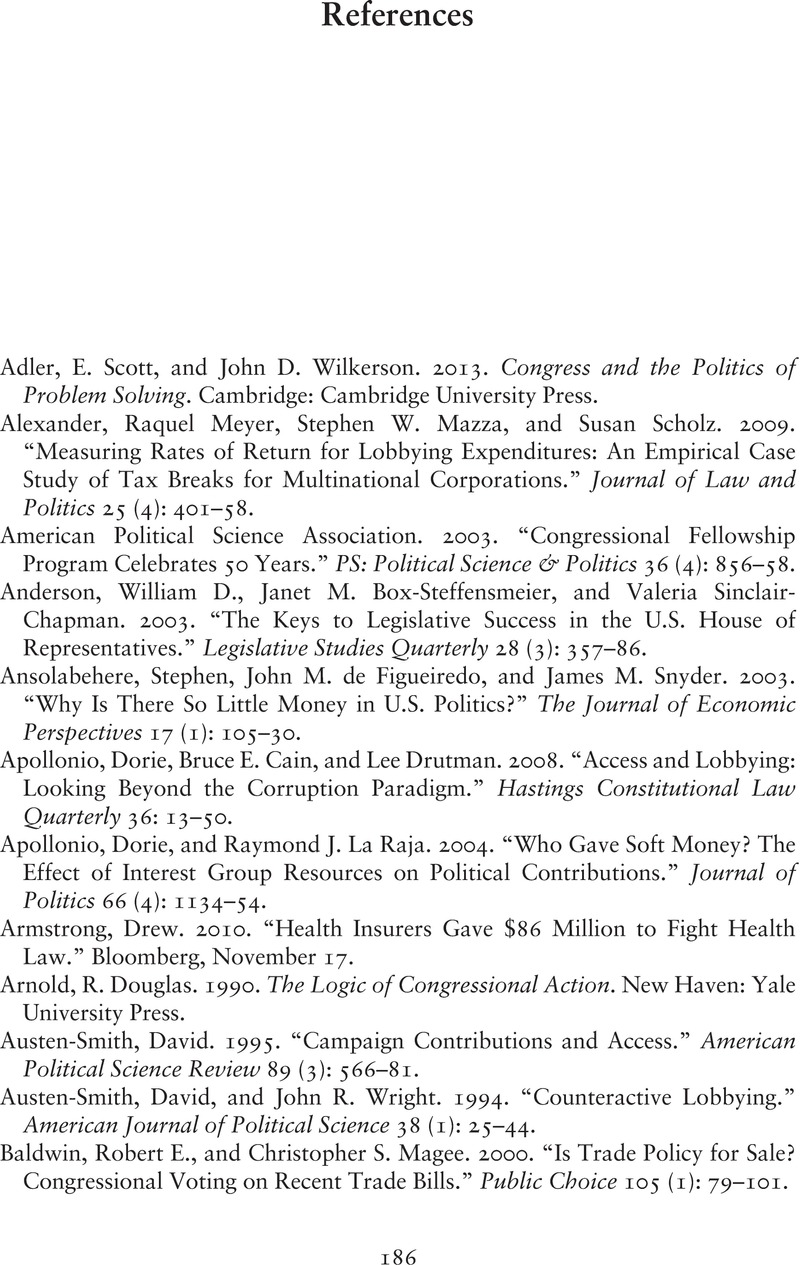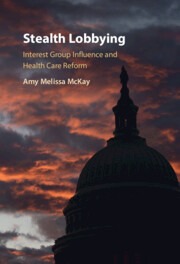Book contents
- Stealth Lobbying
- Stealth Lobbying
- Copyright page
- Contents
- Figures
- Tables
- Acknowledgments
- 1 Identifying the Hidden Influence of Lobbyists in Public Policymaking
- 2 Scheduling Influence and Buying Access
- 3 The Strategic Behavior of Individual Lobbyists and Their PACs
- 4 Stealth Fundraising and Legislative Favors
- 5 Stealth Lobbying, Stealth Contributions, and the Affordable Care Act
- 6 Conclusions about Money in Politics
- References
- Index
- References
References
Published online by Cambridge University Press: 14 July 2022
- Stealth Lobbying
- Stealth Lobbying
- Copyright page
- Contents
- Figures
- Tables
- Acknowledgments
- 1 Identifying the Hidden Influence of Lobbyists in Public Policymaking
- 2 Scheduling Influence and Buying Access
- 3 The Strategic Behavior of Individual Lobbyists and Their PACs
- 4 Stealth Fundraising and Legislative Favors
- 5 Stealth Lobbying, Stealth Contributions, and the Affordable Care Act
- 6 Conclusions about Money in Politics
- References
- Index
- References
Summary

- Type
- Chapter
- Information
- Stealth LobbyingInterest Group Influence and Health Care Reform, pp. 186 - 199Publisher: Cambridge University PressPrint publication year: 2022



